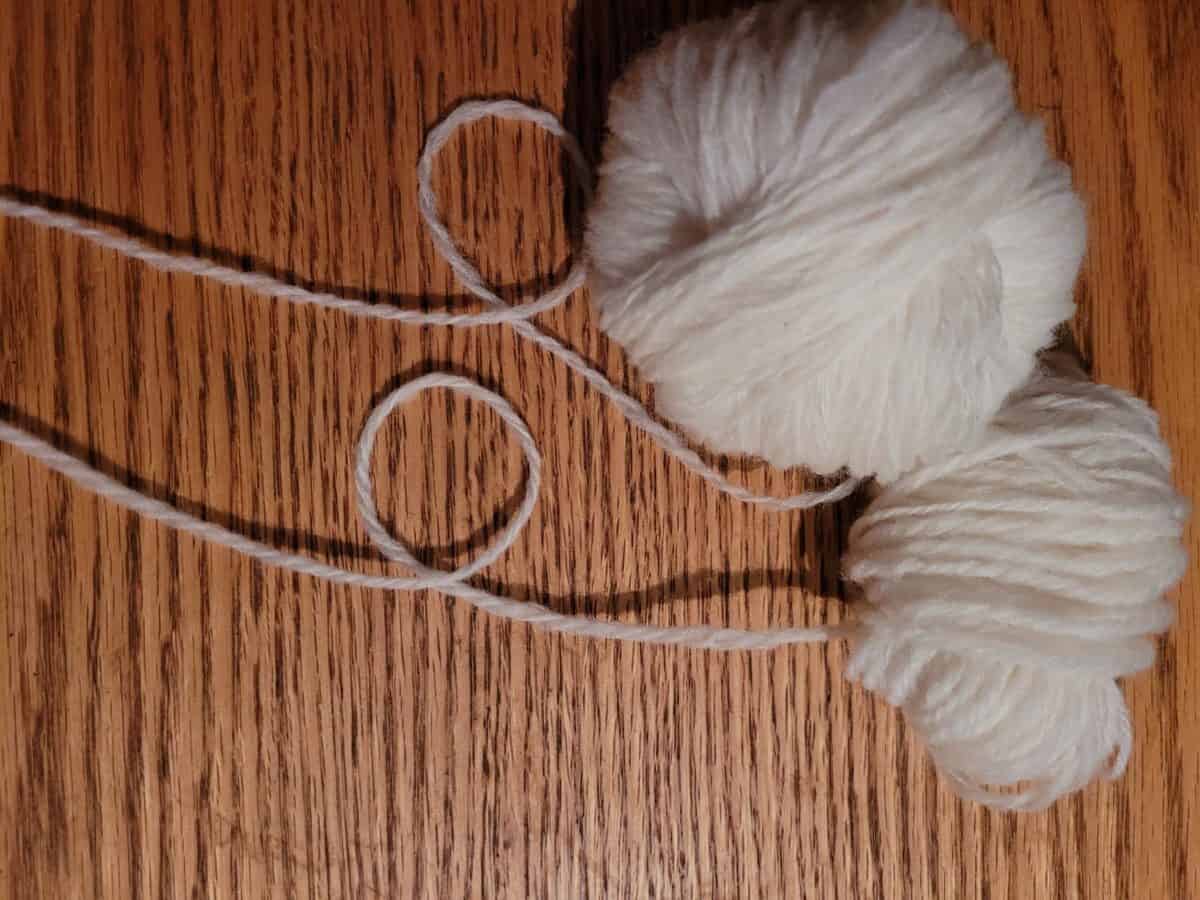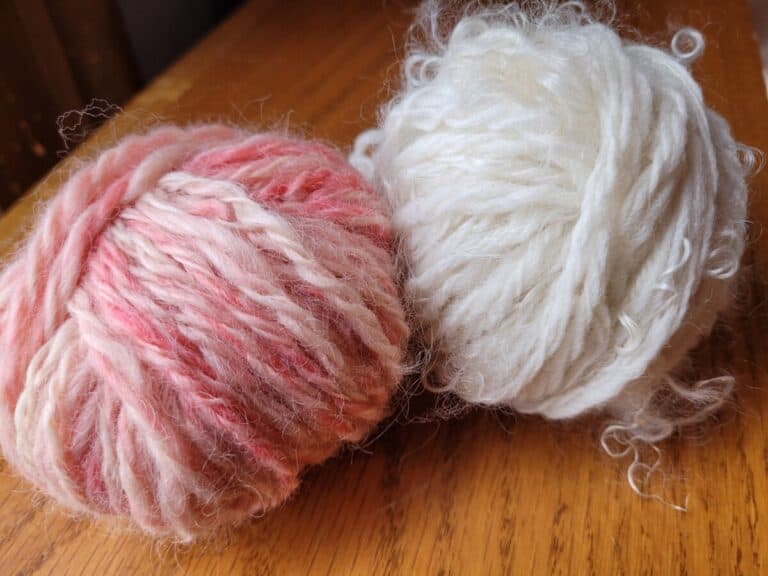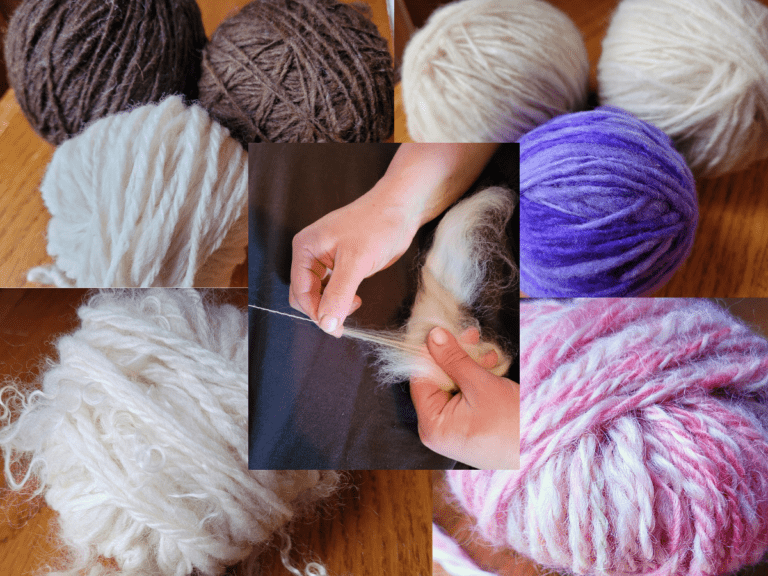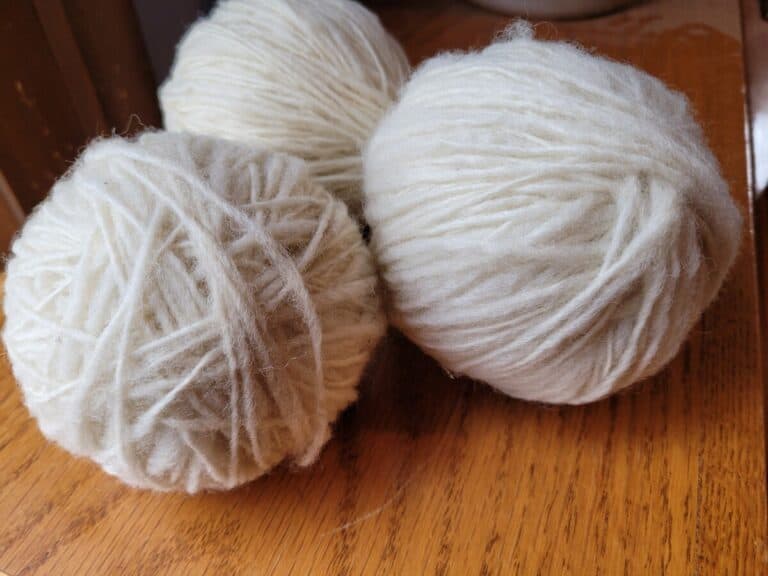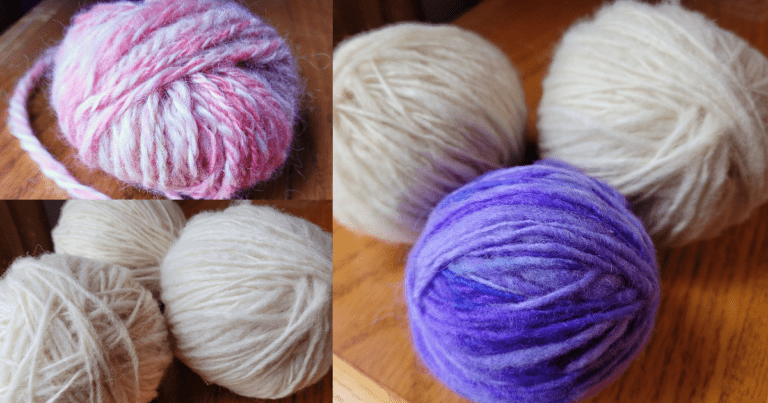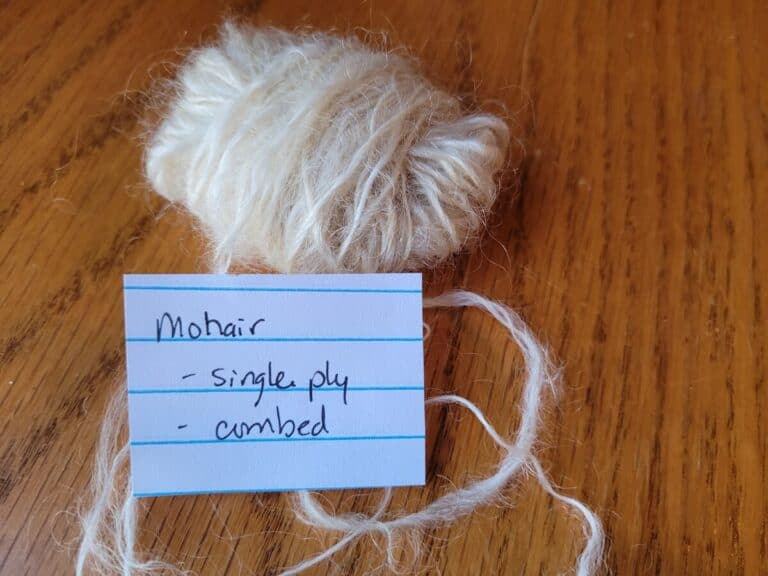How Long Does It Take To Spin Yarn?
One of the main concerns of new spinners is how long will it take to spin yarn.
Well, as you may have guessed already, it depends, but what does it depend upon? That’s where we can get into some specifics, let’s get started.
Want to learn handspinning? Check out Woolmaven Handspinning, it’s a course designed for beginners who want to learn at their own pace on their own schedule!
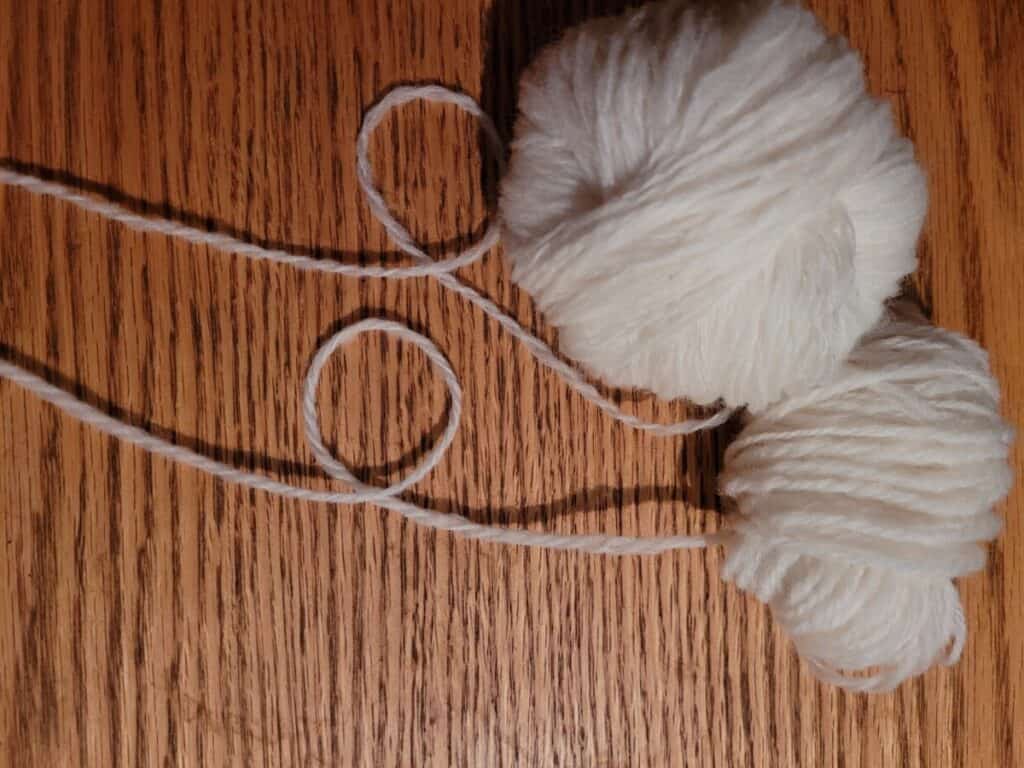
| Yarn being spun | Person spinning | Yards per hour |
| single | average spinner (mix of faster and slow spinners) | 260 |
| plying | average spinner | 2x single yards per hour |
| single | faster spinner | 400 yards per hour |
| single | fastest spinner (that I could find) | 560+ yards per hour |
| single | slower spinner | 120 yards per hour |
| fine single | fastest spinner | 150 yards per hour |
Time to spin the single
A handspinner can spin anywhere from 400-120 yards per hour, depending upon the skill and speed of the spinner. The 400 yards per hour figure is about 4 times faster than me, I’m the 120!
These are yardages from using wheels, since a wheel is my much preferred way to spin, but you could also get good yardages from spindles.
From what I have found, the spindle yardages end up at about half of the wheel yardage, but of course, it depends upon what you are spinning and how skilled you are with the spindle.
Some folks are actually more speedy with the spindle, I just find that to be less common.
My timed spins = 120 yards per hour
When I timed myself, I did two test periods of 15 minutes each and got a very similar yardage (that would work out to about 120 yards per hour) for each time period.
How I measured this was to set the timer, use a marker to make a black line on the yarn where I started (since this was in the middle of a bobbin) and did some casual spinning.
I was spinning at a nice pace and I did not have the fiber split out so I had to stop occasionally and grab more from the bag and split it down. Since that is how I normally spin, that’s what I timed.
If I were concentrating on speed and had the wool pre split, I would have been a touch faster. If I wanted to be significantly faster I would need to do some sprints and change to the fastest whorl for my wheel.
All doable, I just like how the yarn is turning out now and am having a good time so I’ll stick here at my 120 or so for a while.
Update: I also need to mention, my numbers above were for spinning a worsted style yarn, which is generally speaking a slower way to spin, so anyone spinning more of a woolen style yarn should be a bit faster. How much faster? That depends, of course, but overall, woolen spun is faster to make yardage than worsted spun.
An important note about the average listed in the table above:
I did come across a blog by a man, Aaron, in California who states that he can spin more than 560 yards per hour, wow! The average of 260 stated above is from 400 and 120, without the 560.
I left Aaron’s number out of the average since I found multiple other spinners coming in at about 400 yards per hour and I wanted to give handspinners a more likely yardage rate.
Is Spinning Your Own Yarn Worth It? is an article I wrote to go over the costs and benefits of spinning your own yarn, with price comparisons included.
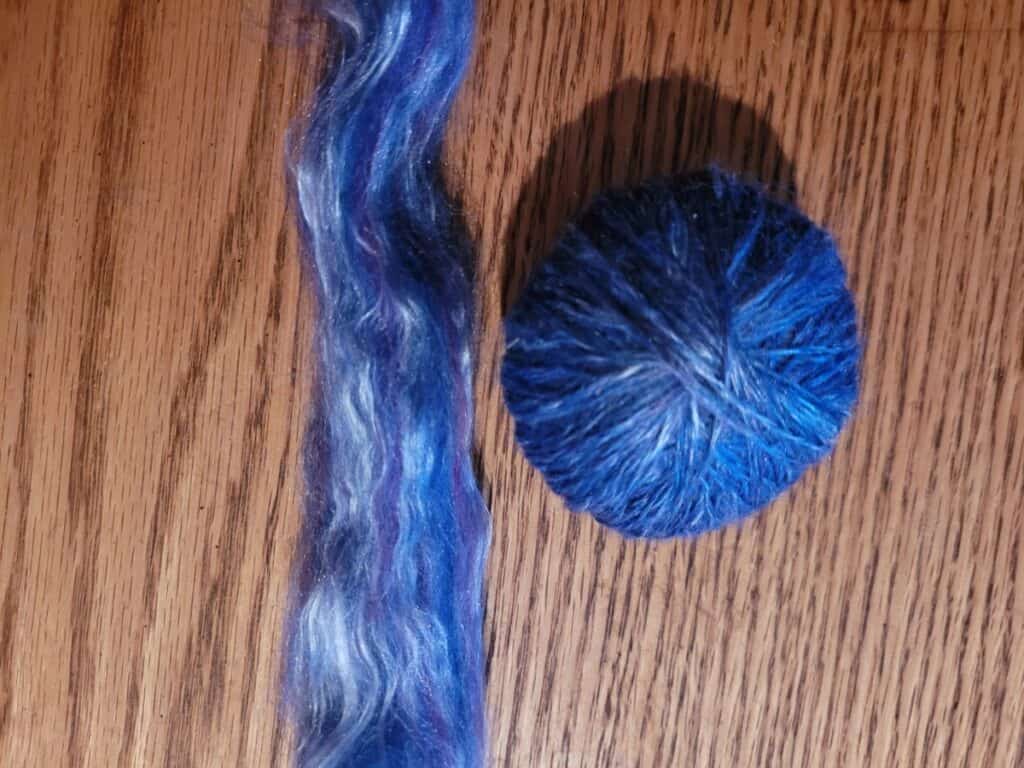
Beginners will not spin these yardages
At first, you will not be able to hit these yardages. New spinners will start small and that’s okay since the sooner you start, the sooner you get to getting better.
Once you get some experience with your wheel and are reasonably competent with the combination of your wheel the fiber and the type of spinning you are trying to do, now you can consider speed.
Until you are able to reliably spin a bobbin of yarn with minimal breakages or adjustments to the wheel, it really is too early in your spinning to start adding the pressure of timing yourself.
At first, concentrate on putting in the time with your wheel. You’ll get there and know that everybody starts out wobbly. Keep after it.
Using a drop spindle is generally slower than a wheel
Using a drop spindle is generally slower than a wheel to spin your yarn, but notice I said generally, not always.
Some folks are amazing with spindles and can go just as fast, if not faster with the spindle compared to a wheel so this ends up as another it depends answer.
Since, overall, most folks tend to be a bit slower with a spindle, so we will go with spindles being slower for the average person.
In Spinning the most, the fastest, Sweet Georgia.com lists the results from a spinning competition in 2009, where the wheel spinners and spindle spinners competed for a 15 minute spin off.
The wheel spinners averaged 90-92 yards per 15 minutes and the spindle spinners averaged 38-56 yards in the same time period. This puts the spindle spun yarns at 1/3 to 1/2 the yardage of the wheel spun.
Should You Learn To Spin On A Wheel Or A Spindle? is an article I wrote on the pros and cons of learning to spin with wheels or spindles.
Want to learn to spin? Join Woolmaven Handspinning, it’s a beginner specific course that has step by step lessons that are easy to follow and can be watched and worked through at your own pace.
Wheel vs spindle experiment by one spinner=wheel 2x as fast for her
An article with the same person spinning on both a wheel and spindles was done to compare completed yardage for both tools by Alias Ela at sca.unspunworld.com.
Spinning Speed Experiment was done in 2021 to see if she would be faster on her wheel compared to her spindles, since she feels that she produces the same type of yarn from both methods.
She spun a measured amount of wool, which was 1 ounce of Corriedale top, on each of the three spindles and the wheel and timed the results.
Ela used purchased combed top to eliminate fiber preparation variances from influencing the results.
What she found was that the spindles averaged 1 hour and 43 minutes to spin 1 ounce of the Corriedale while the wheel took 26.76 minutes. That makes the wheel quite a bit faster for Ela, more than 3x faster.
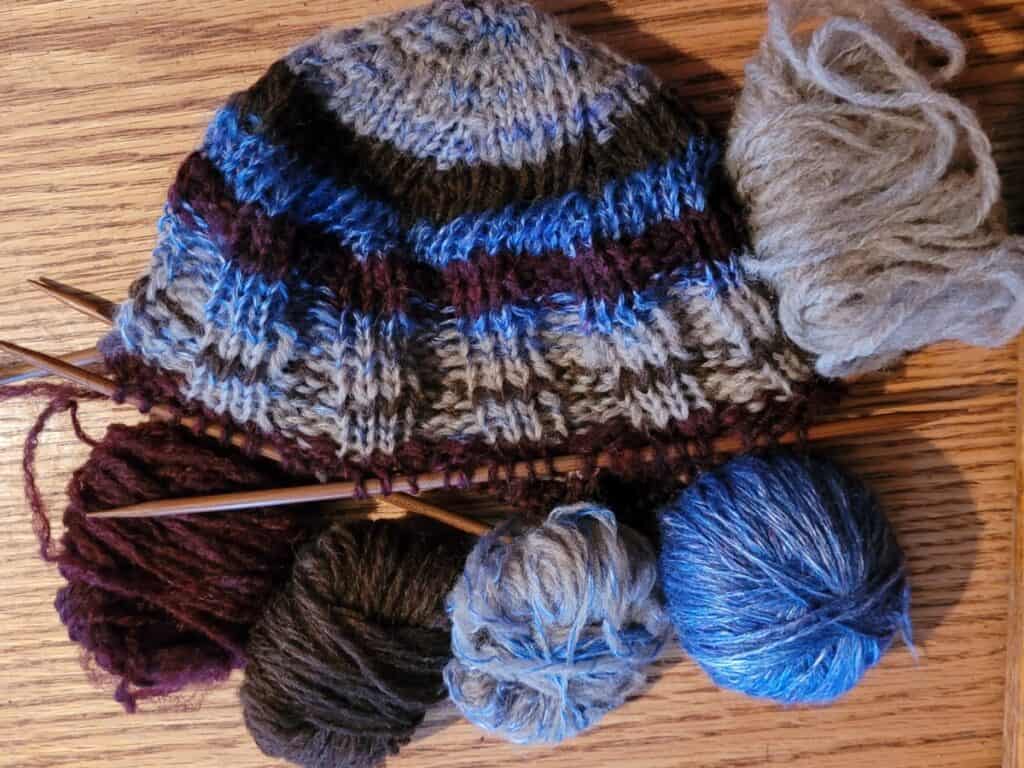
Spindle spun yardage varied noticeably
However, that 1 hour and 43 minutes was an average of all the spindles, top whorl, bottom whorl and Turkish. We want to know how does the fastest spindle (top whorl for her) compare to the wheel?
The top whorl spindle took just over an hour (1 hour and 4.8 minutes) to spin the fiber, making this by far the fastest spindle for her, but still it took more than twice as long as the wheel.
Of course this is just the results from one person, but it does show that at least for her, there is a noticeable difference in yardage produced by wheel as compared to spindle.
Do you need to prepare the fiber?
All of this assumes that you are using a commercially prepared fiber, meaning combed top that you purchased as ready to spin fiber.
If you have to do anything at all to the fiber other than take it out of the bag to use, then you’ll want to add that to the time as well.
What else would you need to do? Well, I always split the top into sections so I have less drafting to do later.
It takes a few tries to get to the size I like, which depends on what I’m trying to spin and how grabby the fiber is.
The other thing you may want to do is alter the fiber a bit, as in do you want to blend in another fiber or color or do you want to spin with a different preparation, like rolags, rather than using the top?
Of course, neither of these extra steps is required if you are using ready to spin fiber, but if you want to alter the fiber from what you purchased, that time will need factored in, as well.
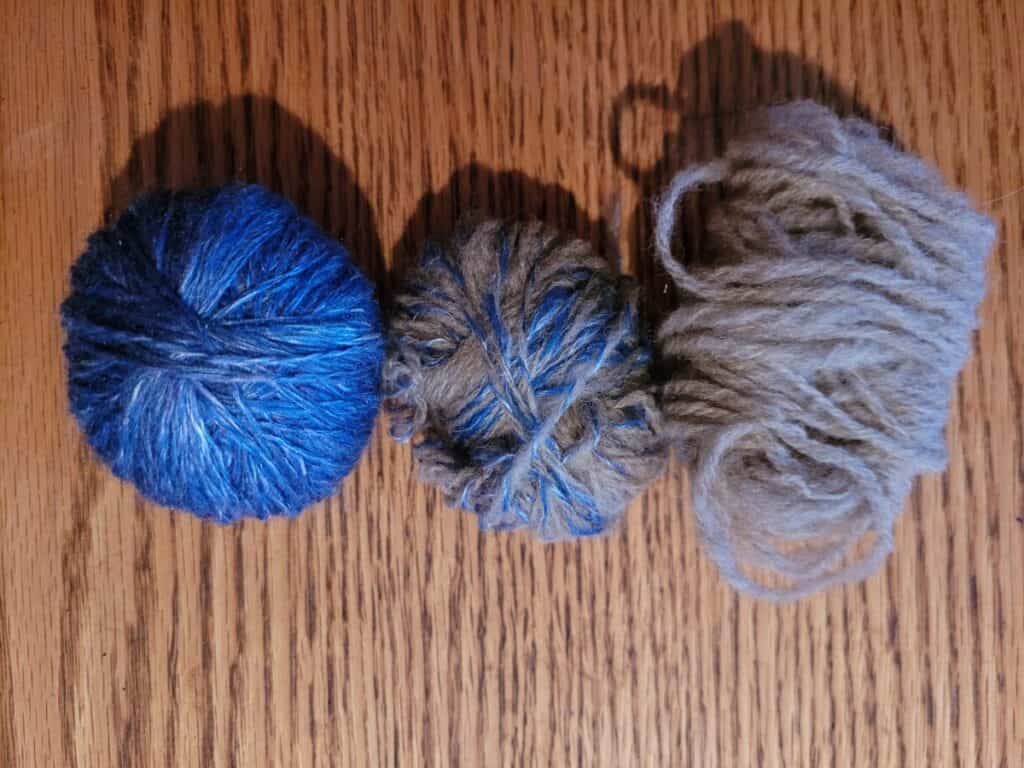
Do you need to do some test spins?
Have you done some test spins? If not, you should plan to have your first few encounters with your new to you fiber as experimental and see what shakes out.
Does the yarn perform the way you want it to? Are you seeing additional properties in the wool or yarn that you did not realize would be there, so now you are changing your mind on what to do with it?
You may be surprised that the wool you thought would be super for a fluffy hat yarn inspires you to make felt or a rug instead.
I like to make a small test swatch out of my test spin, just to see how this wool knits up for me.
I am always surprised at how different the test swatches end up being even though I started with two very similar wools and felt that I had spun them the same.
Then, as an additional step, I like to see how easily the test swatches felt, if I have not used that wool before. Just to give me an idea of some possibilities.
Time to ply is half of spinning time
The numbers from above are for spinning a single, which can be used as is, but most folks would ply their yarns to get more stability and a more even yarn to work with. Plying also tacks on more time.
Most folks would need to spin two bobbins worth of singles for a two ply yarn and three bobbins worth of singles for a three ply, then spend the time plying, which takes about half the time of spinning.
Using my numbers, I could spin 120 yards per hour of a single, take a half hour and chain ply that into about 40 yards of yarn and have 40 yards of finished yarn in 1.5 hours.
Or I could take 3 hours and spin 120 yards per hour to get 360 yards, take 1.5 hours to ply that into a standard three ply yarn and get 120 yards of a three ply yarn in 4.5 hours.
Now if I were faster, I could spin the 400 yards per hour, take a half hour to chain ply that single into 133.3 yards of finished yarn for a total of 133.3 yards in 1.5 hours.
The faster spinner’s numbers for a standard three ply would be 400 yards per hour per single, so 1200 yards in 3 hours plus 1.5 hours to ply for 400 yards of a standard three ply yarn done in 4.5 hours.
I would consider these numbers to be fairly extreme, in that once you get good at spinning you’ll probably end up somewhere in the middle of all this.
There are multiple ways to ply yarn
While there are multiple ways to ply, most folks would go with a two or a three ply yarn.
Since you have only spun one of the plies, you need to double or triple the spinning time to get the singles you need to put together for the finished plied yarn.
There are ways to ply off of one single, chain plying comes to mind, of course, but that just shrinks your finished yardage to a third (since all your plies are coming from one bobbin).
Do you need to dye yarn?
The last step to making the yarn would be to dye it, if you are going to do any dyeing. Of course, it’s optional but common, so we’ll include it.
It will take an hour or so to dye the yarn, most of this is hands off time where you just have to check in on the dye pot once in a while. When the dyeing is done, you rinse it and dry, then it’s good to go.
It will take overnight to dry the yarn, since it can not be put into a clothes dryer or felt prone wools will felt.
You could use a laundry spinner to get out most of the water and reduce drying time, but you’ll still have a few hours of drying no matter how you work it out.
If you didn’t dye your yarn, you would want to set it. This means you would rinse it out in warm water with a bit of fiber wash or detergent, which will set the twist, then rinse and dry.
It will take a few hours to overnight to dry.
For anyone wanting a fluffier yarn, you can “full” the yarn, which means whapping it on the counter top or something similar, while it’s still wet which will puff up the finished yarn a bit.
Not everyone will want this, but if you want “bloom” then plan to add 10-15 minutes of whapping to get the desired yarn.
Other factors that may be affecting yardage
There are also other factors that may be affecting your total yardage spun:
- what type of wheel you are using, more specifically spinning ratios
- type of spinning you are doing
- your familiarity with that method
- how well prepared your fiber is
- what fiber you are using, some are more grabby than others
Need some help with your spinning? Check out Woolmaven Handspinning and learn to spin with confidence!
Resources:
A Fisherman Knits: How fast did professional hand spinners spin? is a site by Aaron who is the fastest spinner I have been able to find. He states that he routinely spins at more than 560 yards per hour but slows down to about 150 yards per hour for a fine single, which is 26 twists per inch.
Spinning for Speed Edgewood Gardens says she can spin 400 yards per hour while watching a movie, so going reasonably quickly but at a pace that she can keep up
All Fiber Arts.com has the article How long to Spin Yarn, in which the author states that she can spin a full bobbin in an hour and plying that amount of yarn takes another half hour, thus plying is twice as fast as spinning or 2x the single spun yards per hour.
Spinning the most, the fastest at Sweet Georgia.com has listed results from a spinning competition held at The Great Yarn Caper at SOAR in 2009 with the fastest wheel spun yarn a 90-92 yards in 15 minutes which ends up at nearly 400 yards per hour (360-368 specifically).

